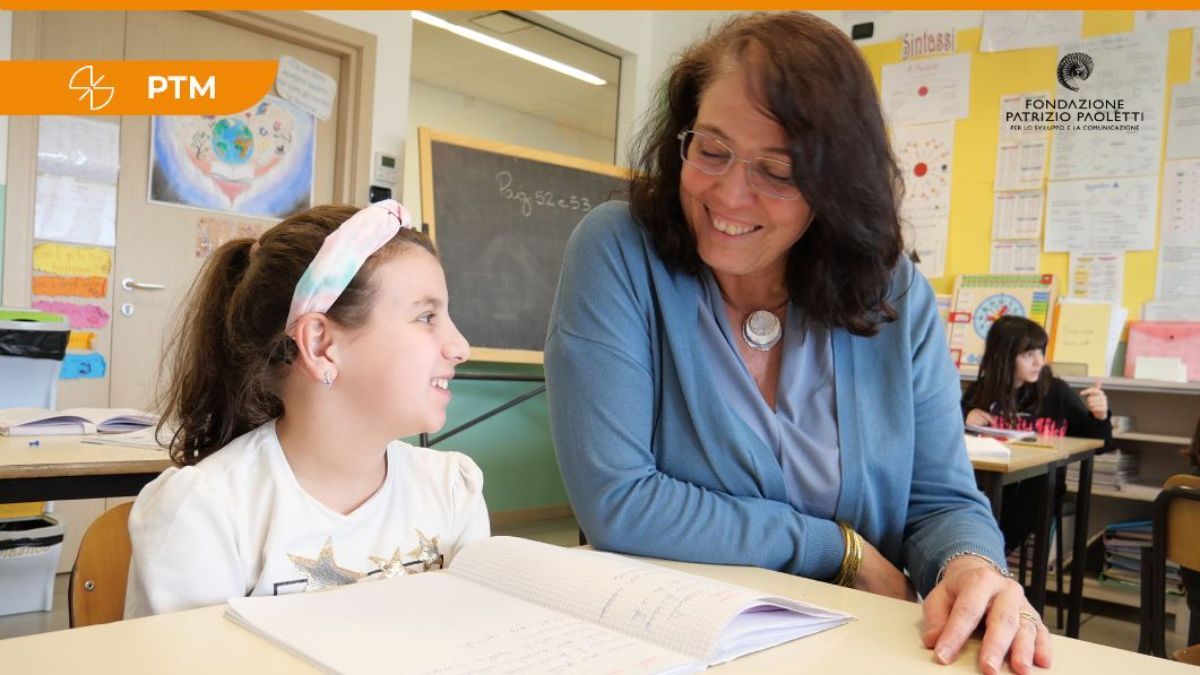
Self-esteem is learned with the law of a hundred steps of mediation
Parents and teachers often ask themselves how they can help their children and students develop self-esteem. At AIS – Assisi International School, the Patrizio Paoletti Foundation school based on the Montessori Method and Pedagogy for the Third Millennium, students can develop self-esteem through personalized work on autonomy. Learning to move confidently and naturally in one’s environment, knowing how to take care of oneself and others, makes every child feel safe and secure. Confidence and tranquillity are, in fact, the basis of self-esteem.
Methodologically, it is a matter of applying the correct distance between educator and student in very simple actions, by means of constancy and patience. The most effective tasks are the everyday ones such as trying and succeeding in putting on one’s shoes, folding and hanging up a garment, tidying up after completing a task, forming a word with moveable letters, sorting according to certain characteristics… gives every child, starting from the earliest years, great confidence in their own abilities, in the possibility of learning and improving every day, provided the educator maintains the right distance.
At a first glance, the fact that mediation involves a distance in the educational relationship may sound strange: don’t we have the idea that we have to be with the student, at their side? Yes, it is true, educators have a duty to be ever present and attentive towards their students and to accompany them through the stages of their development, but this must not mean taking their place in tackling obstacles. Obstacles are, in fact, irreplaceable learning opportunities for every human being, provided that they are matched to the skills that the learner can actually put into practice in the present moment. This is where the educator’s role as mediator comes into play; their task is to help the child face the obstacle that is still too big for them. It is not a matter of removing the obstacle, but of ensuring that, through the ‘mediated approach’, the child can take the next step on the path, the step that achieves his or her present possible advancement.
The the hundred steps law
In Pedagogy for the Third Millennium (PTM), the ongoing process of mediation is described as the ‘hundred steps law’, i.e. if we imagine that we divide the distance separating the educator from the student into 100 parts, and the student is only able to take 10 steps at the moment, the educator will approach them with 89 steps. In this way, the student will feel the desire to join the educator, finding the push to take that extra step that still separates them. This effort that attests to the child’s growth and learning is called ‘super-effort’ and is necessary for the child’s advancement.

In the diagram presented here, the ‘super-effort’ that the educator demands of the student in order to grow is represented by the wavy arrow ‘s’.
The eleventh step of our metaphor does not represent a mere effort for the child, i.e. the utilisation of already acquired abilities, but is a ‘super-effort’ in that it requires them to develop new abilities, new understanding, new vision, with respect to the abilities already acquired. Without ‘super efforts’, as all educators know, there is no progress. The mediator’s skill lies in identifying what Vygotsky calls the Zone of Proximal Development. The process of mediation allows the educator to position themselves appropriately and for the student to develop the meaningful outcome that they can actually pursue at the present time.
At school
And at school? Teachers know how encountering a difficulty that is too great can be demotivating for a student and does not stimulate the desire to learn. On the other hand, not having a new step forward to make, by means of effort, can lead to boredom and demotivation. Calibrating demands thanks to the ability to mediate, knowing how to find the moment and the stimulus that can bring about a new advancement, and giving the students space to be able to choose how and what to do. Also at school self-esteem can be developed by emphasizing and celebrating every achievement. From this perspective, error is always welcomed as a ‘teacher’ because it highlights the areas on which every teacher and student must focus their attention, in order to overcome them.
In PTM, for the support process known as ‘scaffolding’ to take effect, the planned support action requires the educator to perform certain specific functions, such as:
- Support and motivate the student especially in times of difficulty;
- Monitor the level of difficulty of the tasks proposed to the student so that they are suited to their abilities at the time;
- Prompt the learner until the goal is achieved;
- Emphasize the fundamental aspects of the task at hand to the student;
- Help them manage frustration;
- Show how the task can be accomplished by acting as a model.
The support offered by the educator enables the student to adopt the knowledge as their own, becoming conscious of their achievements. When the student recognizes their achievements and becomes aware that they possess the necessary skills to perform the required tasks it feeds their self-esteem, which increases and becomes more stable.
Maria Montessori taught that every student asks the adult: ‘help me to do it myself’. When a child, thanks to the correct help from the adult, learns to do something independently for which they previously needed help, their face lights up and they know that everything they are now unable to do is within their grasp thanks to the help they can get to do it themselves. This is the start of the process of developing self-esteem as a well-founded appreciation of one’s abilities.
Be part of the change. Responsibly sharing content is an act of sustainability.
Let's train emotional intelligence: what emotion does this article arouse in you?







